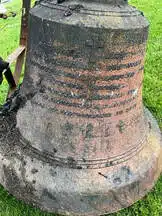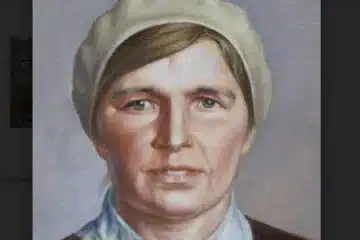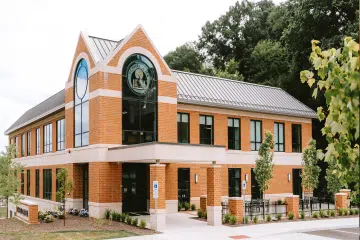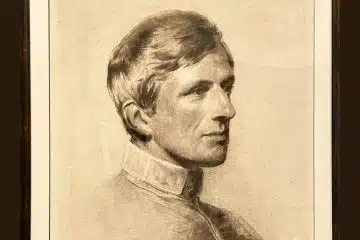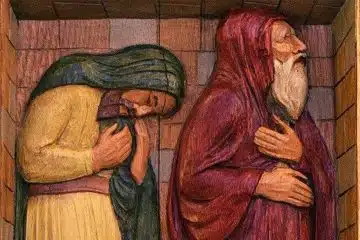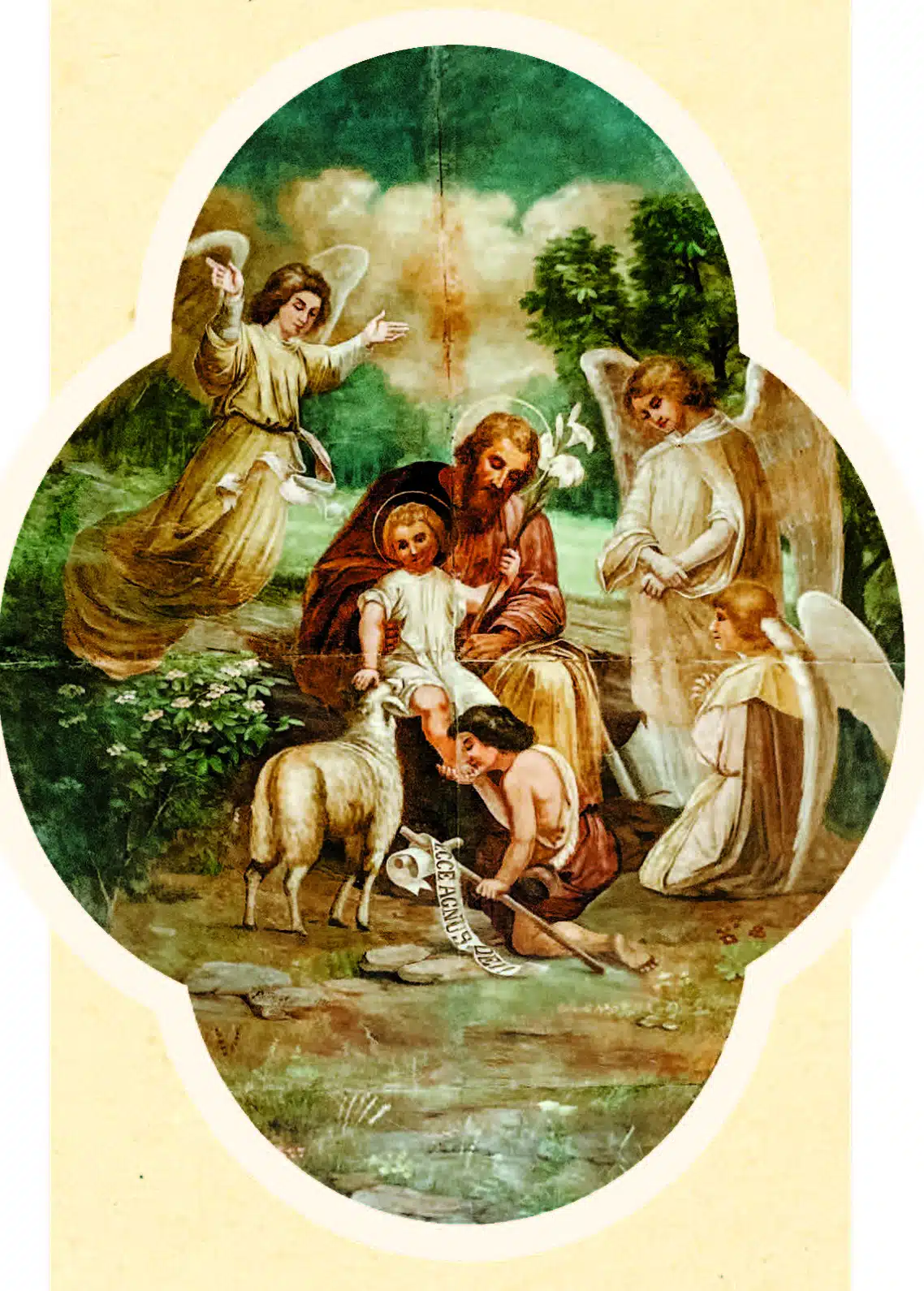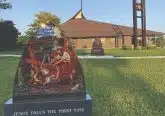The Priest who painted Father Trost

STORY BY Matt Hess
PHOTO COURTESY Archives of the Missionaries of the Precious Blood, US Province
The Land of the Cross-Tipped-Churches is a collection of Catholic churches in the northern part of our archdiocese named for the gold crosses atop their spires. Founded by immigrants who were largely German farmers, over 45 of these churches were built within a 30-mile radius, and many retain the original red brick neo-gothic structure.
It was natural to desire paintings and statues of those who reside in heaven, so the Missionaries of the Precious Blood allowed Father Paulinus Trost, C.PP.S., to further develop his God-given talents by decorating these sacred spaces.
Born in Baden, Germany, in 1856 to a family skilled in art, Trost first learned painting and charcoal drawing from his father. At 19, Trost left for America to enter the Missionaries of the Precious Blood.
Permitted to paint but not sign his work while in seminary, Trost signed most of his work after his ordination, in 1885 by Archbishop Elder. He usually signed in Latin with the date he completed it and never accepted payment for his work, nor was it displayed in art galleries; he is quoted in several places as saying, “Only one reward I seek – only one voice I hear.” He knew he was storing up true treasure in heaven by serving the People of God.
Father Trost was sent to the Royal Academy of Art in Munich in 1889, returning after three years, when he began painting churches. While at St. Charles Seminary (now St. Charles Center) from 1899 to 1917 and the Maria Stein Convent (now Shrine) from 1923-1931, he spent a significant amount of time painting for local churches.
Many of Father Trost’s ceiling murals remain today. The large scenes he painted on canvas in his studio were affixed to the church ceilings with paste. While these were usually images of the Blessed Mother, using heavenly blues and glorious golds, the ceiling in St. Joseph, outside of Fort Recovery, displays a mural of St. Joseph and the child Jesus with John the Baptist.
For two summers, while rector of St. Charles, Father Trost designed and painted the Chapel of the Assumption, although the chapel today showcases a glittering mosaic. Still, some of his original art pieces can be seen in the center’s hallways.
In one of those chapel murals now lost to time, the depiction of purgatory with its purifying fires, Father Trost painted himself. However, Father Hoying shared the legend that “he painted himself into it, but he was outside of the flames.” Perhaps, this priest painter had a sense of humor?
During the many years of the late 1920’s that Father Trost was chaplain to the Sisters of the Precious Blood at their former motherhouse, then the convent at Maria Stein, he painted a mural for their chapel and a set of Stations of the Cross. The stations are excellent examples of his great skill in landscapes, while the ceiling showcases his work with figures.
By the time Father Paulinus Trost died on November 2, 1939, he had painted countless images and was regarded by members of the Precious Blood Community as “a modern Michelangelo.” His chalice is kept in the Shrine’s Heritage Museum. As we reflect on this artist’s contribution in this Holy Year 2025, we hold him as a good example for skilled believers to be of service to God’s people. May his works in our local churches inspire local artists to share their talents in spreading God’s love.
Pilgrimage of Works in the Archdiocese of Cincinnati:
Holy Cross Family of Parishes (Fort Recovery & Coldwater)
St. Anthony Church
St. Mary Church
St. Joseph Church
St. Henry Parishes (St. Henry)
St. Wendelin Church
St. Aloysius Church
St. Francis Church
Christ our Light Family of Parishes (Maria Stein, Minster, & New Bremen)
Nativity of the BVM Church
St. Rose Church
St. John the Baptist Church
Other sites:
St. Charles Center
Maria Stein Shrine of the Holy Relics
This article appeared in the February 2025 edition of The Catholic Telegraph Magazine. For your complimentary subscription, click here.


